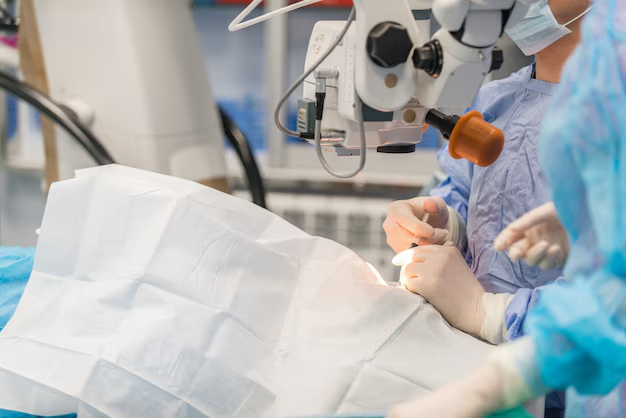Is Cataract Eye Surgery Painful? Understanding the Experience
Cataract surgery is a common procedure aimed at restoring vision by removing the clouded lens of the eye, known as a cataract, and replacing it with an artificial lens. While the fear of pain is a common concern for prospective patients, understanding the nature of the surgery, the sensations involved, and the post-operative process can help ease anxieties. Here, we'll explore every aspect of cataract surgery, guiding you through what to expect and addressing common fears.
What Happens During Cataract Surgery?
The Procedure Explained
Cataract surgery is typically an outpatient procedure, meaning you can go home the same day. The surgery usually takes about 15 to 30 minutes. Here is a step-by-step guide to what happens:
- Preparation: Before the surgery begins, you'll be given local anesthesia in the form of eye drops, which numb the eye. Occasionally, you may receive a mild sedative to help you relax.
- Surgical Steps:
- Incision: A small incision is made at the edge of your cornea.
- Lens Removal: Through this incision, the surgeon will use an ultrasound device to break up the cataract and remove the tiny fragments.
- Lens Implantation: The surgeon inserts a clear, artificial intraocular lens (IOL) in place of the old lens.
- Closure: The incision is so small that it typically heals on its own and may not even require stitches.
Pain and Discomfort During Surgery
Most patients report very little, if any, pain during the procedure. The local anesthesia ensures that your eye is numb, and any sensations you might experience are usually more about pressure than pain. A feeling of slight pressure or movement might occur as the surgeon works on your eye, but this is generally not distressing.
Peri-operative Experiences
Common Sensations
- Pressure: As mentioned, some pressure may be felt during certain parts of the surgery, such as when the ultrasound is used to break up the cataract.
- Light Sensitivity: You will likely experience bright lights in the operating room due to the microscope the surgeon uses.
- Blurred Vision: Immediately following surgery, you may notice blurred vision until your eye starts to heal and adjust to the new lens.
Anesthesia and Sedation
The vast majority of cataract surgeries utilize local anesthesia. General anesthesia is rarely used and typically reserved for specific patient needs or extreme cases. The sedative you might receive will not put you to sleep but will keep you calm and relaxed.
Post-operative Recovery
Immediate Aftercare
After the surgery, you’ll rest in a recovery area for a short period while the anesthesia wears off. Your medical team will provide you with all the necessary care instructions for a smooth recovery.
Managing Discomfort
While the surgery itself may not be painful, some discomfort can occur afterward. Here’s what one might experience:
- Dryness: It’s common to feel a gritty sensation as if there is sand in your eye.
- Itchiness and Mild Discomfort: These can be treated with over-the-counter pain relievers or prescribed medication.
- Sensitivity to Light: Wearing sunglasses can help manage this sensitivity when heading outside.
Taking Care Post Surgery
Guidelines to Follow
A successful recovery from cataract surgery involves adhering to a few simple guidelines:
- Avoid Rubbing Your Eye: It’s crucial to avoid any contact with your eye during the initial healing phase.
- Protective Eyewear: Use any shields or protective eyewear as recommended, especially while sleeping.
- Follow Medication Instructions: Use the prescribed eye drops to prevent infection and reduce inflammation.
- Avoid Strenuous Activities: Refrain from heavy lifting or strenuous exercises for a specified period post-surgery.
Recognizing Complications
While complications are rare, it is vital to be aware of symptoms that require immediate medical attention, such as:
- Severe pain or a sudden loss of vision
- Persistent redness or swelling
- The presence of floaters or flashes in your vision
Questions About Cataract Surgery
Addressing Common Concerns
1. Will my vision be immediately improved?
Most patients some improvement in vision within the first few days after surgery. However, it might take a few weeks for your vision to fully stabilize.
2. Are follow-up appointments necessary?
Yes, follow-up appointments are essential to ensure proper healing and to monitor the progress of your vision restoration.
3. Can cataracts return after surgery?
Once a cataract is removed, it cannot grow back. Nevertheless, some patients may experience a condition known as posterior capsule opacification (PCO), which can cause similar symptoms and requires a straightforward laser treatment to correct.
Summary: Key Takeaways for Cataract Surgery Patients
Here is a quick summary that encapsulates what to expect and how to prepare for cataract surgery:
- 🙂 Minimal Pain: The procedure involves little to no pain; pressure sensations are more common but manageable.
- 👓 Post-operative Care: Adhering to aftercare instructions and attending follow-up appointments significantly influences the outcome and comfort.
- 🔍 Recognize Symptoms: Be alert to any unusual symptoms post-surgery and report them promptly to your healthcare provider.
- 👍 Quick Recovery: Most patients experience significant visual improvement within days to weeks, though complete stabilization of vision may take some time.
In conclusion, cataract surgery, while naturally accompanied by anxiety about potential discomfort, is generally painless and highly effective. With proper care and attention to post-operative instructions, patients can look forward to vastly improved vision and minimal disruption to their daily lives. Trust in your medical team and feel empowered in your journey towards clearer, brighter vision.
